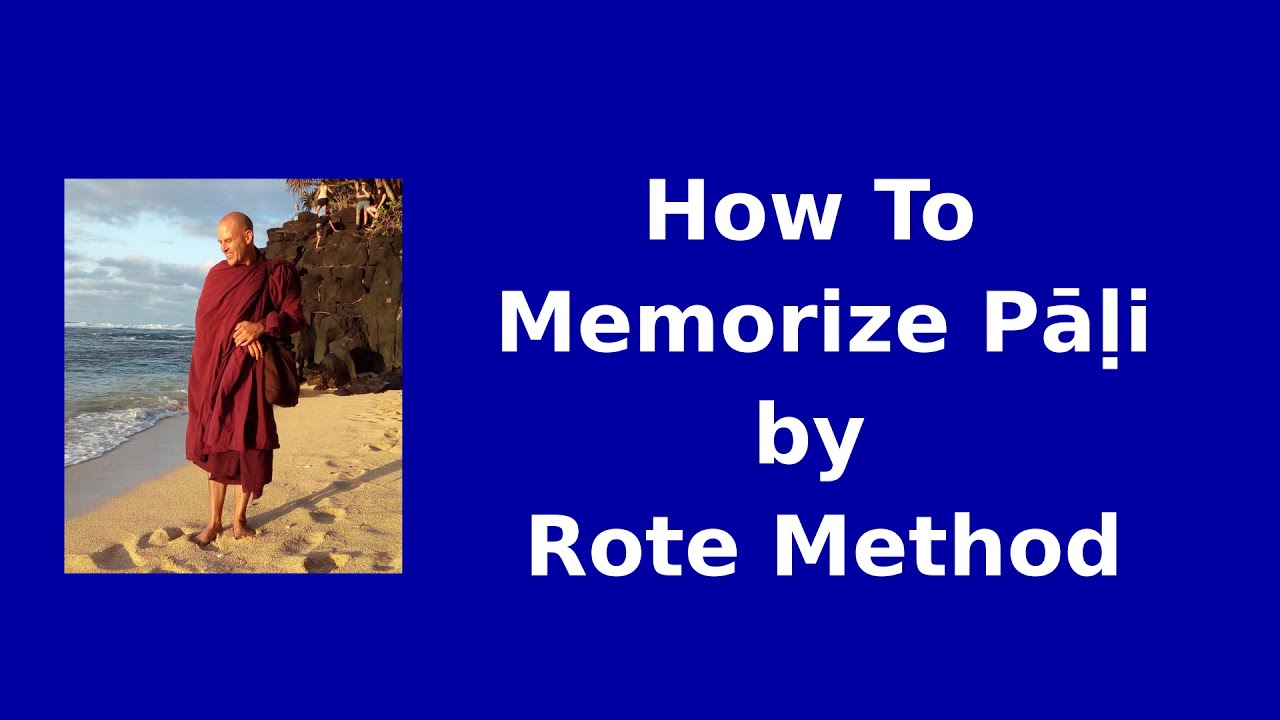I’d like to share my experience in learning Pāli with the hope that it will motivate others to pick up this wonderful language.
Why learning Pāli? I started just wanting to understand the monks’ chanting and later realized the joy and deeper understanding of reading the suttas in its original form. Later I found out that the commentaries answer many questions that I had during my sutta reading. I also learned to put aside portions of the commentaries that are not helpful to me.
My journey: When I was a young engineer, I was fortunate to learn Buddhism and Vipassana meditation from the late venerable U Sīlānandabhivamsa in San Francisco. Not coming from a Theravada background Sayadaw had to undo many wrong ideas that I had about Buddhism. Sayadaw first taught us what one needs to know to be called a Well-Informed Buddhist and in this class sayadaw used many Pāli words. Sayadaw said “I know you don’t understand Pāli but I want you to be familiar with the terms and the sound so later on you could learn Pāli. Once you know Pāli you don’t even want to use terms in your own native language”. With 2 weeks of vacation time and raising a family of four children I had no time for Pāli and devoted mostly to the Vipassana practice. I made one attempt to learn Pāli later on but gave up after 6 months due to my lack of time to study/memorize the grammar. I made several attempts here and there but my engineering mind that keeps asking why (hence more grammar to learn with no time for it) prevented me to continue.
More than 20 years later I went to Burma to practice meditation and asked Thamanaykyaw sayadaw to teach me Mahāsatipaṭṭhāna sutta in Pāli. He has a simple way of teaching Pāli without much grammar so at the end I was able to read and understand the sutta. Then I realized my obstacle in learning Pāli and did not give up afterwards. I then learned Pāli over Zoom with Stephen Sas using Lily De Sylva Primer book (light in grammar) then A New Course in Reading Pāli by G&K (more grammar but not too bad). I collected more Pāli grammar books from the internet to dive deeper on my own as each book has its own advantages. The main thing is that I did not give up and had confidence that I’ll get better.
I later studied Pāli with U Hla Myint, a lay Burmese man who could answer any questions that I may have. I’m now studying how to read the commentaries with him and what a joy it is!
Summary: from my experience, learning a new language the way babies learn. At the beginning, don’t spend too much time asking why and memorizing grammar rules. Have your own balance between tasting the joy of understanding the suttas in Pāli and Pāli grammar so one does not give up. As one has tasted the joy, the deeper learning comes naturally. Also it’s never too old to learn a new language. There is a medical study that shows learning a new language delays dementia by at least 5 years or something like that. I hope my sharing will motivate some readers who gave up in learning Pāli to pick it up again.
May the true dhamma fostered in the West.
